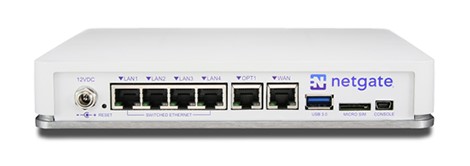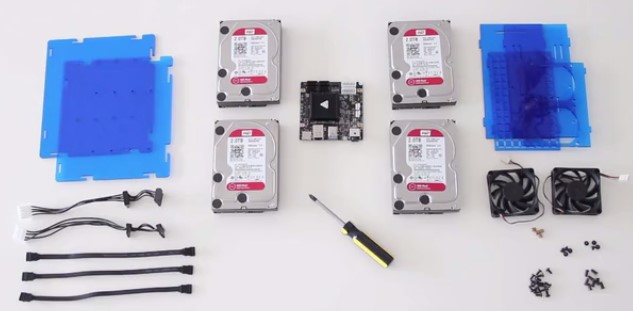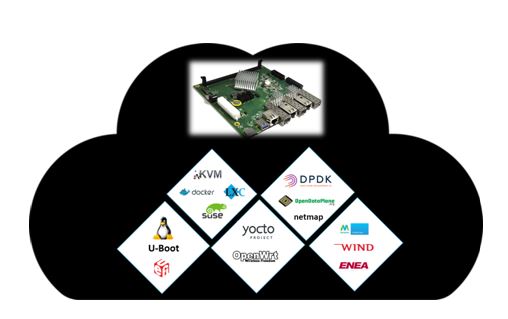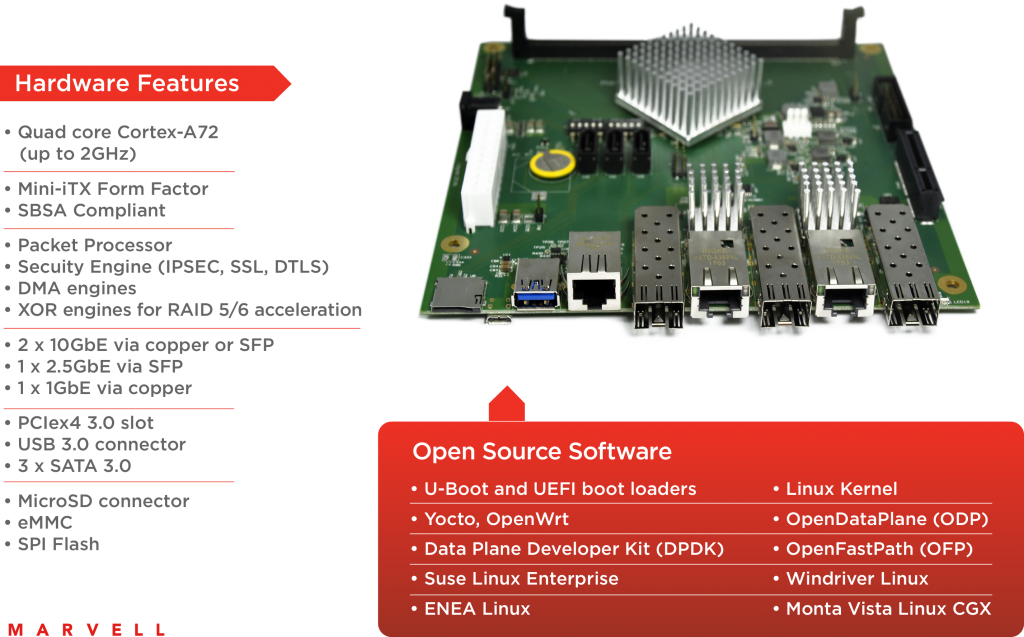Archive for the 'Data Processing Units' Category
-
February 01, 2023
ウインドリバーとマーベル、CSP向け仮想化RANソリューションの拡充で協業
By Kim Markle, Director Influencer Relations, Marvell
Wind River and Marvell have collaborated to create an open, virtualized Radio Access Network (vRAN) solution for communication service providers (CSPs) that offers cloud scalability with the features, performance, and energy efficiency of established 5G networks. The collaboration integrates two complementary, industry-leading technologies—the Marvell® OCTEON® 10 Fusion 5G baseband processor and the Wind River Studio cloud software—to provide the carrier ecosystem a deployment-ready vRAN platform built on technologies that are widely proven in 5G networks and data centers.
CSPs aim to leverage established IT infrastructure for enhanced service agility and streamlined DevOps in the cloud-native RAN. Marvell's OCTEON 10 Fusion processor supports these goals with programmability based on open-source, industry-standard interfaces and integration with leading cloud software platforms such as Wind River Studio.
To ensure open-source distribution of Wind River Studio software, OCTEON 10 Fusion software drivers are being used by StarlingX, an open development and integration project. Marvell’s drivers enable Wind River Studio software to communicate with and control the OCTEON 10 Fusion processor. This facilitates developer access to an optimized vRAN system that offers new options for CSPs and helps to expand the carrier ecosystem of RAN and data center hardware and software suppliers, as well as system integrators.
-
February 28, 2023
Dell、OCTEON 10 FusionでvRANのリーダーシップを推進
By Johnny Truong, Senior Manager, Public Relations, Marvell
To address the growing demands of 5G applications (and beyond), networks are not only expected, but required, to offer features, performance, and capacity competitive with traditional RAN while improving energy efficiency and cost-savings.
Watch this video of Dennis Hoffman, SVP and GM of Dell’s Telecom Systems Business discuss how Dell and Marvell will continue building on its strategic partnership in pursuit of truly open mobile networks and how they’re bringing the power of Layer 1 Acceleration technology to the vRAN architecture with Marvell’s OCTEON® 10 Fusion processor, designed for 5G RAN.
-
February 27, 2023
マーベルとVMwareがRANの最適化に向けて協力
By Peter Carson, Senior Director Solutions Marketing, Marvell and Tosin Olopade, Technical Product Line Manager, VMware and Padma Sudarsan, Director of Engineering, RAN Architecture, VMware
VMware, a pioneer in assisting communication service providers (CSPs) in transforming their networks, is partnering up with Marvell, a leading provider of data infrastructure semiconductor solutions to improve RAN performance and ROI. This collaboration provides solutions that enable CSPs to meet the demands of 5G’s increased capacity and use cases, optimizing the revenue and efficiency of each RAN site.
RAN sites worldwide are targeted for new technology deployment, where traditional, custom-made equipment is being replaced with servers adapted from data centers. This transformation to virtualized RAN and Open RAN, which replaces hardware with software, is driving the modernization of RAN sites worldwide. This allows CSPs to select servers and software based on their strategic goals, enabling them to offer unique services compared to their competitors.
However, 5G RAN workloads, particularly Layer 1 (L1), are far more complex and latency-sensitive than the applications that general purpose CPUs have been designed to address. The load on even the most robust CPUs in the case of 5G RAN virtualization can be demanding. The rapid increase in 5G network speeds, reaching multi-gigabit-per-second, and the management of software-centric RAN Distributed Units (DUs) has resulted in rising energy consumption and cooling demands. This leads to increased costs, such as higher electricity bills, and may compromise CSPs’ plans to monetize their RAN investments.
-
February 03, 2023
OCTEON 10 Recognized as “Best Embedded Processor” in Analysts’ Choice Awards, Powered by TechInsights
By Johnny Truong, Senior Manager, Public Relations, Marvell
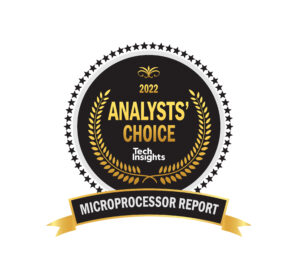
The Marvell® OCTEON® 10 DPU was awarded the 2022 Analysts’ Choice Awards for “Best Embedded Processor” in TechInsight’s Microprocessor Report.
One of the longest-running award programs of its kind, it salutes the top semiconductor offerings in the categories of data center, PC, smartphone, and embedded processors, as well as processor IP cores and related emerging technologies. Winning products were selected for superior features, performance, power, and cost in the context of the company’s target applications and competition.
The OCTEON 10 DPU--the world’s first Arm Neoverse N2-based processor in 5nm--is the latest version of the OCTEON processor family. By accelerating wireless, networking, storage, security and other specialized workloads, OCTEON 10 enables best-in-class features, performance, energy efficiency, and total cost of ownership for carriers, cloud providers, and enterprises.
The OCTEON processor family is used by four of the top six wireless infrastructure OEMs, in nine of the top 10 firewall appliances, and by other major networking OEMs.
TechInsight Chief Analyst Joseph Byrne said: “Processors for communications infrastructure have long pushed the leading edge for embedded products. Marvell’s feat shows that succeeding in the high-performance-embedded market doesn’t require leveraging smartphone or PC/server technology.”
Microprocessor Report subscribers can access commentary on the winners, details on what sets them apart, and other nominees in each category here.
To learn more about Marvell’s latest addition to the OCTEON DPU family, visit us at MWC 2023 in Barcelona at booth 2F34 in Hall 2.
-
February 02, 2023
オープンでクラウドネイティブな5G RANへの妥協なきアプローチ
By Peter Carson, Senior Director Solutions Marketing, Marvell
The rise of fully open and optimized vRAN platforms based on globally-proven 5G layer one hardware accelerators, led by Marvell, has given Open RAN operators the industry’s first no-compromise vRAN solution. Unlike the so-called “look-aside” general-purpose alternative, the Marvell architecture is host server CPU agnostic and uniquely enables (1) RAN software programmability, based on open source, industry standard interfaces and (2) inline hardware acceleration that delivers feature, performance and power parity as compared to existing 5G networks -- absolutely critical requirements of mobile operators. Listen to what leading operators are saying about inline vRAN accelerators.
-
January 04, 2023
ソフトウェアで定義された自動車のためのソフトウェアで定義されたネットワーキング
マーベル、オートモーティブビジネスユニット、マーケティング担当バイスプレジデント、アミール・バー・ニヴ、ソナタス、および最高マーケティング責任者、ジョン・ハインライン、マーベル、オートモーティブビジネスユニット、SW担当副社長、サイモン・エーデルハウス著
ソフトウェアデファインド車両(SDV)は、自動車業界における最新かつ最も興味深いメガトレンドのひとつである。 以前のブログ で述べたように、この新しいアーキテクチャーとビジネス・モデルが成功する理由は、すべての利害関係者にメリットをもたらすからである:
- OEM(自動車メーカー)は、アフターマーケットサービスや新たなアプリケーションから新たな収入源を得るだろう。
- 車の所有者は、車の機能や特徴を簡単にアップグレードできる。
- モバイル通信事業者は、新しいアプリケーションによる車両データ消費の増加から利益を得るだろう。
ソフトウェアデファインド車両とは何か? 正式な定義はないが、この用語は、柔軟性と拡張性を可能にするため、車両設計におけるソフトウェアの使用方法の変化を反映している。 ソフトウェアデファインド車両をよりよく理解するためには、まず現在のアプローチを検証する必要がある。
今日の自動車機能を管理する組込み制御ユニット(ECU)にはソフトウェアが含まれているが、各ECUのソフトウェアは他のモジュールと互換性がなく、孤立していることが多い。 更新が必要な場合、車両の所有者はディーラーのサービスセンターに出向かなければならず、所有者は不便を強いられ、メーカーにとってはコストがかかる。
-
December 05, 2022
リーディング・ライツ賞、デネブCDSPのリーダーシップを評価
By Johnny Truong, Senior Manager, Public Relations, Marvell
 At this weeks’ Leading Lights Awards Ceremony, hosted by Light Reading, Editor-in-Chief Phil Harvey announced that the Marvell® Deneb™ Coherent Digital Signal Processor (CDSP) is the winner of the Most Innovative Service Provider Transport Solution category. This recognition is awarded to the optical systems vendor or optical components vendor providing the most innovative optical transport solution for service provider customers.
At this weeks’ Leading Lights Awards Ceremony, hosted by Light Reading, Editor-in-Chief Phil Harvey announced that the Marvell® Deneb™ Coherent Digital Signal Processor (CDSP) is the winner of the Most Innovative Service Provider Transport Solution category. This recognition is awarded to the optical systems vendor or optical components vendor providing the most innovative optical transport solution for service provider customers.Driving the industry's largest standards-based ecosystem, the Marvell Deneb CDSP enables disaggregation which is critical for carriers to lower their CAPEX and OPEX as they increase network capacity. This recognition underscores Marvell’s success in bringing leading-edge density and performance optimization advantages to carrier networks.
In its 18th year, the Leading Lights is Light Reading’s flagship awards program which recognizes top companies and executives for their outstanding achievements in next-generation communications technology, applications, services, strategies, and innovations.
Visit the Light Reading blog for a full list of categories, finalists and winners.
-
April 01, 2021
マーベル、5Gの真の可能性を引き出すO-RANを実現
マーベル、PR チーム
At the most recent FierceWireless 5G Blitz Week, some of the world’s leading 5G innovators met via webinar to discuss the potential of O-RAN and challenges of the ongoing 5G rollout. In a keynote, EVP and General Manager of Marvell’s Processors Business Group Raj Singh explored the accelerating shift to O-RAN, which is an emerging open-source architecture for Radio Access Networks that enables customers to create better 5G applications by mixing and matching RAN technology from different vendors.
O-RAN architectures are compelling because they increase competition among vendors, reduce costs, and offer customers greater flexibility to combine RAN elements according to their application’s specific use cases. However, in addition to their obvious benefits, O-RAN solutions also raise operator concerns including potential challenges with integration, legacy support, interoperability and security – issues that Marvell and other companies in the Open RAN Policy Coalition are addressing through shared standards, proven solutions and innovative approaches.
-
July 25, 2019
マーベル、Arm ベースのサーバー CPU のリーダーシップで評価
By Kumar Sankaran, Senior Director, Product Management, Marvell
Marvell has been selected by IT Brand Pulse’s 2019 IT pro voting as the leader in Arm®-based server CPUs. In a clean sweep across all categories, Marvell’s ThunderX® was voted as the leader in market, price, performance, reliability, service and support, and innovation. The results are based on an independent, non-sponsored survey given to IT professionals on server products. The survey is conducted once a year by IT Brand Pulse, a trusted source for research, data and analysis about data center infrastructure.
Marvell® ThunderX® processors, based on the Armv8-A architecture, bring industry-leading compute and memory performance as well as technology innovation backed by a rich ecosystem of more than 70+ partners. As the most widely supported and deployed Arm-based server processor in the world, Marvell ThunderX processors power High-Performance Computing, Cloud and Edge applications.
-
October 17, 2018
マーベルは Arm TechCon 2018 で AWS Greengrass によるエッジコンピューティングを実証します
By Maen Suleiman, Senior Software Product Line Manager, Marvell and Gorka Garcia, Senior Lead Engineer, Marvell Semiconductor, Inc.
Thanks to the respective merits of its ARMADA® and OCTEON TX® multi-core processor offerings, Marvell is in a prime position to address a broad spectrum of demanding applications situated at the edge of the network. These applications can serve a multitude of markets that include small business, industrial and enterprise, and will require special technologies like efficient packet processing, machine learning and connectivity to the cloud. As part of its collaboration with Amazon Web Services® (AWS), Marvell will be illustrating the capabilities of edge computing applications through an exciting new demo that will be shown to attendees at Arm TechCon - which is being held at the San Jose Convention Center, October 16th-18th.
This demo takes the form of an automated parking lot. An ARMADA processor-based Marvell MACCHIATObin® community board, which integrates the AWS Greengrass® software, is used to serve as an edge compute node. The Marvell edge compute node receives video streams from two cameras that are placed at the entry gate and exit of the parking lot. The ARMADA processor-based compute node runs AWS Greengrass Core; executes two Lambda functions to process the incoming video streams and identify the vehicles entering the garage through their license plates; and subsequently checks whether the vehicles are authorized or unauthorized to enter the parking lot.
The first Lambda function will be running Automatic License Plate Recognition (OpenALPR) software and it obtains the license plate number and delivers it together with the gate ID (Entry/Exit) to a Lambda function running on the AWS® cloud that will access a DynamoDB® database. The cloud Lambda function will be responsible for reading the DynamoDB whitelist database and determines if the license plate belongs to an authorized car. This information will be sent back to a second Lambda function on the edge of the network, on the MACCHIATObin board, responsible for managing the parking lot capacity and opening or closing the gate. This Lambda function will be logging the activity in the edge to the AWS Cloud Elasticsearch® service, which works as a backend for Kibana®, an open source data visualization engine. Kibana will enable a remote operative to have direct access to information concerning parking lot occupancy, entry gate status and exit gate status. Furthermore, the AWS Cognito service authenticates users for access to Kibana.
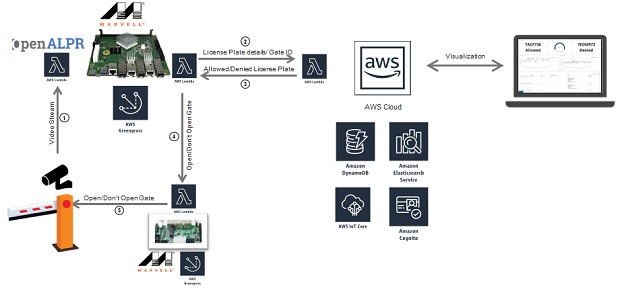
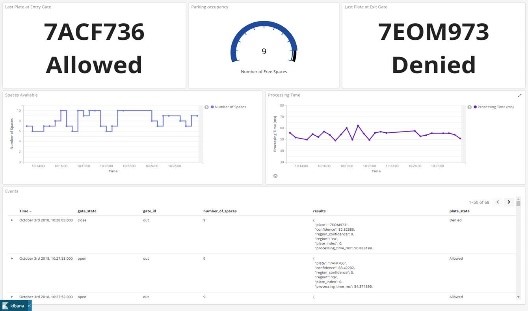
After the AWS Cloud Lambda function sends the verdict (allowed/denied) to the second Lambda function running on the MACCHIATObin board, this MACCHIATObin Lambda function will be responsible for communicating with the gate controller, which is comprised of a Marvell ESPRESSObin® board, and is used to open/close the gateway as required.
The ESPRESSObin board runs as an AWS Greengrass IoT device that will be responsible for opening the gate according to the information received from the MACCHIATObin board’s second Lambda function.
This demo showcases the capabilities to run a machine learning algorithm using AWS Lambda at the edge to make the identification process extremely fast. This is possible through the high performance, low-power Marvell OCTEON TX and ARMADA multi-core processors. Marvell infrastructure processors’ capabilities have the potential to cover a range of higher-end networking and security applications that can benefit from the maturity of the Arm® ecosystem and the ability to run machine learning in a multi-core environment at the edge of the network.
Those visiting the Arm Infrastructure Pavilion (Booth# 216) at Arm TechCon (San Jose Convention Center, October 16th-18th) will be able to see the Marvell Edge Computing demo powered by AWS Greengrass.
For information on how to enable AWS Greengrass on Marvell MACCHIATObin and Marvell ESPRESSObin community boards, please visit http://wiki.macchiatobin.net/tiki-index.php?page=AWS+Greengrass+on+MACCHIATObin and http://wiki.espressobin.net/tiki-index.php?page=AWS+Greengrass+on+ESPRESSObin.
-
April 30, 2018
ARMADA 3720 SoC は CZ.NIC 製の画期的なモジュラー式ルータを可能にします
マーベル、シニア・ソフトウェア・プロダクト・ライン・マネージャー、マエン・スレイマン著
Marvell ARMADA® embedded processors are part of another exciting networking solution for a crowdfunding project and are helping “power” the global open hardware and software engineering community as innovative new products are developed. CZ.NIC, an open source networking research team based in the Czech Republic, just placed its Turris MOX modular networking appliance on the Indiegogo® platform and has already obtained over $110,000 in financial backing.
MOX has a highly flexible modular arrangement. Central to this is a network processing module featuring a Marvell® ARMADA 3720 network processing system-on-chip (SoC). This powerful yet energy efficient 64-bit device includes dual Cortex®-A53 ARM® processor cores and an extensive array of high speed IOs (PCIe 2.0, 2.5 GbE, USB 3.0, etc.).
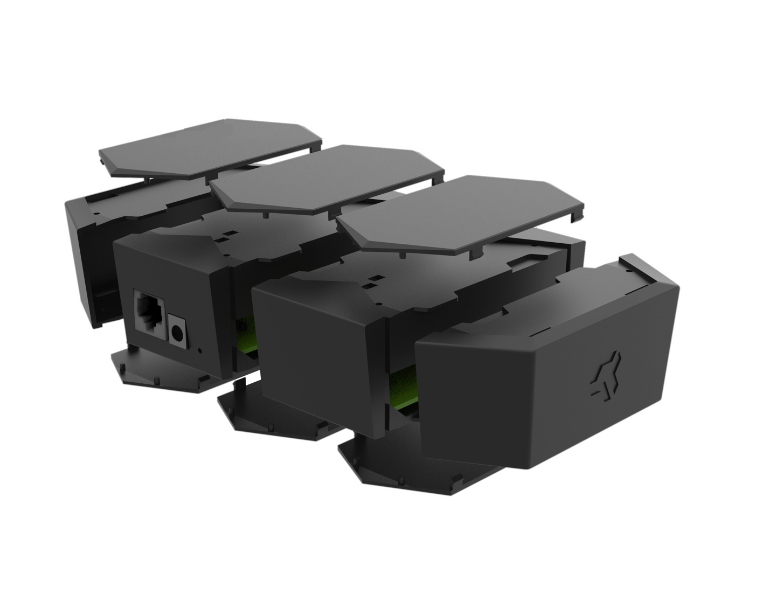
図 1:The MOX Solution from CZ.NIC
The MOX concept is simple to understand. Rather than having to procure a router with excessive features and resources that all add to the cost but actually prove to be superfluous, users can just buy a single MOX that can subsequently be extended into whatever form of network appliance a user needs. Attachment of additional modules means that specific functionality can be provided to meet exact user expectations. There is an Ethernet module that adds 4 GbE ports, a fiber module that adds fiber optic SFP connectivity, and an extension module that adds a mini PCIe connection. At a later stage, if requirements change, it is possible for that same MOX to be repurposed into a completely different appliance by adding appropriate modules.
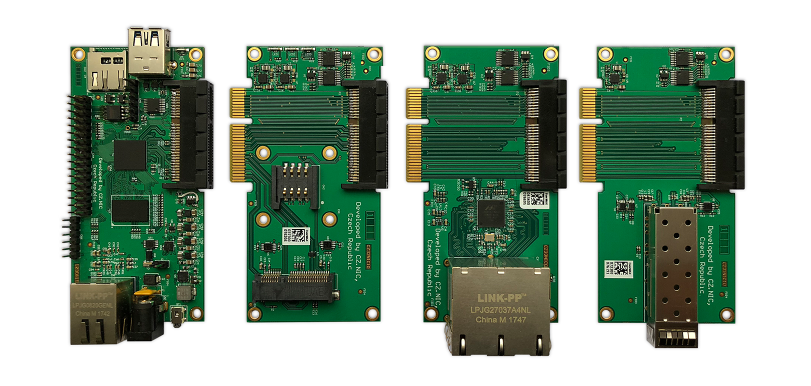
図 2:The MOX Add-On Modules - Base, Extension, Ethernet and SFPThe MOX units run on Turris OS, an open source operating system built on top of the extremely popular OpenWrt® embedded Linux® distribution (as supported by Marvell’s ARMADA processors). This gives the appliance a great deal of flexibility, allowing it to execute a wide variety of different networking functions that enable it to operate as an email server, web server, firewall, etc. Additional MOX modules are already under development and will be available soon.
This project follows on CZ.NIC’s previous crowdfunding campaign using Marvell’s ARMADA SoC processing capabilities for the Turris Omnia high performance open source router - which gained huge public interest and raised 9x its original investment target. Turris MOX underlines the validity of the open source software ecosystem that has been built up around the ARMADA SoC to help customers bring their ideas to life.
Click here to learn more on this truly unique Indiegogo campaign.
-
February 22, 2018
マーベルはモバイル・ワールド・コングレス (MWC) 2018 イベントで、 Marvell ARMADA 8040 SoC と NFVTime ユニバーサル CPE OS を組み合わせたサイバータン・ホワイトボックス・ソリューションデモを行いました
By Maen Suleiman, Senior Software Product Line Manager, Marvel
As more workloads are moving to the edge of the network, Marvell continues to advance technology that will enable the communication industry to benefit from the huge potential that network function virtualization (NFV) holds. At this year’s Mobile World Congress (Barcelona, 26th Feb to 1st Mar 2018), Marvell, along with some of its key technology collaborators, will be demonstrating a universal CPE (uCPE) solution that will enable telecom operators, service providers and enterprises to deploy needed virtual network functions (VNFs) to support their customers’ demands.
The ARMADA® 8040 uCPE solution, one of several ARMADA edge computing solutions to be introduced to the market, will be located at the Arm booth (Hall 6, Stand 6E30) and will run Telco Systems NFVTime uCPE operating system (OS) with two deployed off-the-shelf VNFs provided by 6WIND and Trend Micro, respectively, that enable virtual routing and security functionalities. The CyberTAN white box solution is designed to bring significant improvements in both cost effectiveness and system power efficiency compared to traditional offerings while also maintaining the highest degrees of security.
CyberTAN white box solution incorporating Marvell ARMADA 8040 SoC The CyberTAN white box platform is comprised of several key Marvell technologies that bring an integrated solution designed to enable significant hardware cost savings. The platform incorporates the power-efficient Marvell® ARMADA 8040 system-on-chip (SoC) based on the Arm Cortex®-A72 quad-core processor, with up to 2GHz CPU clock speed, and Marvell E6390x Link Street® Ethernet switch on-board. The Marvell Ethernet switch supports 10G uplink and 8 x 1GbE ports along with integrated PHYs, four of which are auto-media GbE ports (combo ports).
The CyberTAN white box benefits from the Marvell ARMADA 8040 processor’s rich feature set and robust software ecosystem, including:
- both commercial and industrial grade offerings
- dual 10G connectivity, 10G Crypto and IPSEC support
- SBSA compliancy
- Arm TrustZone support
- broad software support from the following: UEFI, Linux, DPDK, ODP, OPTEE, Yocto, OpenWrt, CentOS and more
In addition, the uCPE platform supports Mini PCI Express (mPCIe) expansion slots that can enable Marvell advanced 11ac/11ax Wi-Fi or additional wired/wireless connectivity, up to 16GB DDR4 DIMM, 2 x M.2 SATA, one SATA and eMMC options for storage, SD and USB expansion slots for additional storage or other wired/wireless connectivity such as LTE.
At the Arm booth, Telco Systems will demonstrate its NFVTime uCPE operating system on the CyberTAN white box, with zero-touch provisioning (ZTP) feature. NFVTime is an intuitive NFVi-OS that facilitates the entire process of deploying VNFs onto the uCPE, and avoids the complex and frustrating management and orchestration activities normally associated with putting NFV-based services into action. The demonstration will include two main VNFs:
- A 6WIND virtual router VNF based on 6WIND Turbo Router which provides high performance, ready-to-use virtual routing and firewall functionality; and
- A Trend Micro security VNF based on Trend Micro’s Virtual Function Network Suite (VNFS) that offers elastic and high-performance network security functions which provide threat defense and enable more effective and faster protection.
Please contact your Marvell sales representative to arrange a meeting at Mobile World Congress or drop by the Arm booth (Hall 6, Stand 6E30) during the conference to see the uCPE solution in action.
-
February 05, 2018
pfSense 社の強力なセキュアゲートウェイを支えるマーベルの SoC 技術
マーベル、シニア・ソフトウェア・プロダクト・ライン・マネージャー、マエン・スレイマン著
Marvell’s ground-breaking ARMADA® 38x processor series continues to see momentum in integration into new network and security designs. Most recently, the ARMADA 385 processor has been incorporated into Netgate’s new SG-3100 product offering.
Netgate’s objective with the SG-3100 was to bring to market an entry-level secure gateway solution that offered substantially more horsepower than competing products in the same price range. The target criteria for the new design were:
- Significantly greater performance
- A broader range of functionality
- Flexible configuration to suit customers’ particular needs
Marvell’s engineering team was pleased to collaborate with Netgate on this ambitious project.
図 1:Netgate SG-3100 powered by Marvell ARMADA 385
Processor The SG-3100 exhibits a high degree of flexibility and can be employed as a security firewall, LAN, router or WAN router, or VPN solution. It can also act as a DHCP server or DNS server, as well as providing intrusion detection system (IDS) and intrusion prevention system (IPS) capabilities. This extremely configurable unit comes equipped with 8GB eMMC Flash data storage or two m.2 SATA-based solid-state drives (SSDs), and also supports the LTE standard. Thanks to its Marvell® 88E6141 4-port switched LAN interface, the compact, cost-effective product easily facilitates bridging multiple wired and wireless networks.
Several factors drove Netgate’s decision to use Marvell’s ARMADA 385, starting with the ARMADA 38x ecosystem, which includes the ARMADA 38x ClearFog community board from SolidRun, and the ARMADA 38x FreeBSD port developed by Semihalf. Additionally, an increasing number of pfSense users had requested access to a board that provided three Ethernet ports, especially for dual-WAN operation. The ARMADA 385’s extensive embedded connectivity satisfies this need.
Based on the Arm® Cortex®-A9 topology, the ARMADA 385 system-on-chip (SoC) at the heart of the SG-3100 provides highly effective, dual-core processing capabilities. The SoC has a total of three Ethernet ports - two that support 1 Gbps data rates and a third capable of supporting either 2.5 Gbps or 1 Gbps. In the SG-3100 design, the ARMADA 385 is accompanied by Marvell’s 88E6141 multi-port Ethernet switch, which also supports 2.5Gbps operation through one of its ports.
The Netgate SG-3100 runs at 1.6GHz and is ideal for small offices and domestic environments. And thanks to the constituent IC technology, this solution packs serious throughput at a very compelling price.
-
January 23, 2018
新製品: 開発者の要望を満足する機能を大幅に向上させた最新の MACCHIATObin コミュニティ・ボード
マーベル、シニア・ソフトウェア・プロダクト・ライン・マネージャー、マエン・スレイマン著
Following the success of the MACCHIATObin® development platform, which was released back in the spring, Marvell and technology partner SolidRun have now announced the next stage in the progression of this hardware offering. After drawing on the customer feedback received, a series of enhancements to the original concept have subsequently been made, so that these mini-ITX boards are much more optimized for meeting the requirements of engineers.
Marvell and SolidRun announce the availability of two new MACCHIATObin products that will supersede the previous release. They are the MACCHIATObin Single Shot and the MACCHIATObin Double Shot boards.
As before, these mini-ITX format networking community boards both feature the powerful processing capabilities of Marvell’s ARMADA® 8040 system-on-chip (SoC) and stay true to the original objective of bringing an affordable Arm-based development resource with elevated performance to the market. However, now engineers have a choice in terms of how much supporting functionality comes with it - thus making the platform even more attractive and helping to reach a much wider audience.
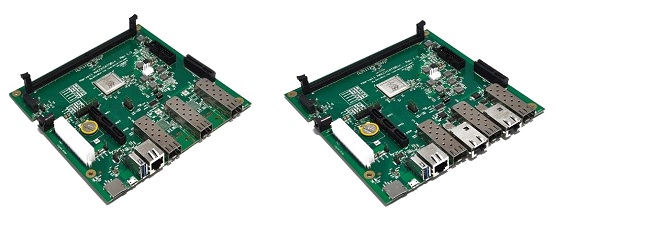
図 1:MACCHIATObin Single Shot (left) and MACCHIATObin Double Shot (right)
The more streamlined MACCHIATObin Single Shot option presents an entry level board that should appeal to engineers with budgetary constraints. This has a much lower price tag than the original board, coming in at just $199. It comes with two 10G SFP+ connectors without the option of two 10G copper connectors, and also doesn’t come with default DDR4 DIMM as its predecessor, but still has a robust 1.6GHz processing speed.
This is complemented by the higher performance MACCHIATObin Double Shot. This unleashes the full 2GHz of processing capacity that can be derived from the ARMADA 8040, which relies on a 64-bit quad-core Arm Cortex-A72 processor core. 4GB of DDR4 DIMM is included. At only $399 it represents great value for money - costing only slightly more than the original, but with extra features and stronger operational capabilities being delivered. It comes with additional accessories that are not in the Single Shot package - including a power cable and a microUSB-to-USB cable.
Both the Single Shot and Double Shot versions incorporate heatsink and fan mechanisms in order to ensure that better reliability is maintained through more effective thermal management. The fan has an airflow of 6.7 cubic feet per minute (CFM) with low noise operation. A number of layout changes have been implemented upon the original design to better utilize the available space and to make the board more convenient for those using it. For example, the SD card slot has been moved to make it more accessible and likewise the SATA connectors are now better positioned, allowing easier connection of multiple cables. The micro USB socket has also been relocated to aid engineers.
A 3-pin UART header has been added to the console UART (working in parallel with FTDI USB-to-UART interface IC). This means that developers now have an additional connectivity option that they can utilize, making the MACCHIATObin community board more suitable for deployment in remote locations or where it needs to interface with legacy equipment (that do not have a USB port). The DIP switches have been replaced with jumpers, which again gives the boards greater versatility. The JTAG connector is not assembled by default, the PCI Express (PCIe) x4 slot has been replaced with an open PCIx4 slot so that it can accommodate a wider variety of different board options (like x8 and x16, as well as x4 PCIe) such as graphics processor cards, etc. to be connected. Furthermore, the fixed LED emitter has been replaced by one that is general purpose input/output (GPIO) controlled, thereby enabling operational activity to be indicated.
The fact that these units have the same form factor as the original, means that they offer a like-for-like replacement for the previous model of the MACCHIATObin board. Therefore existing designs that are already using this board can be upgraded to the higher performance MACCHIATObin Double Shot version or conversely scaled down to the MACCHIATObin Single Shot in order to reduce the associated costs.
Together the MACCHIATObin Double Shot and Single Shot boards show that the team at Marvell are always listening to our customer base and responding to their needs. Learning from the first MACCHIATObin release, we have been able to make significant refinements, and consequently develop two new very distinct product offerings. One that addresses engineers that are working to a tight budget, for which the previous board would not have been viable, and the other for engineers that want to boost performance levels.
-
2018年1月10日
マーベルは CES 2018 で Pixeom Edge Platform を使用して Google Cloud を Network Edge に拡張することによるエッジコンピューティングのデモンストレーションを行いました。
マーベル、シニア・ソフトウェア・プロダクト・ライン・マネージャー、マエン・スレイマン著
マルチギガビットネットワークの採用と次世代5Gネットワークの展開計画により、より多くのコンピューティングとストレージサービスがクラウドに移行するにつれて、利用可能なネットワーク帯域幅は拡大し続けるだろう。 ネットワークに接続されたIoT機器やモバイル機器上で実行されるアプリケーションは、ますますインテリジェント化し、計算負荷が高くなっている。 しかし、非常に多くのリソースがクラウドに流れているため、今日のネットワークには逼迫している。
次世代アーキテクチャでは、従来のクラウド集中型モデルではなく、ネットワークインフラ全体にインテリジェンスを分散させる必要がある。 高性能コンピューティングハードウェア(関連ソフトウェアを伴う)は、ネットワークのエッジに配置する必要がある。 分散型運用モデルは、エッジデバイスに必要なコンピュートとセキュリティ機能を提供し、魅力的なリアルタイムサービスを可能にし、車載、バーチャルリアリティ、産業用コンピューティングなどのアプリケーションに固有の待ち時間の問題を克服する必要がある。 このようなアプリケーションでは、高解像度のビデオやオーディオコンテンツの分析も必要となる。
Through use of its high performance ARMADA® embedded processors, Marvell is able to demonstrate a highly effective solution that will facilitate edge computing implementation on the Marvell MACCHIATObin™ community board using the ARMADA 8040 system on chip (SoC). At CES® 2018, Marvell and Pixeom teams will be demonstrating a fully effective, but not costly, edge computing system using the Marvell MACCHIATObin community board in conjunction with the Pixeom Edge Platform to extend functionality of Google Cloud Platform™ services at the edge of the network. The Marvell MACCHIATObin community board will run Pixeom Edge Platform software that is able to extend the cloud capabilities by orchestrating and running Docker container-based micro-services on the Marvell MACCHIATObin community board.
現在、データ量の多い高解像度のビデオコンテンツを分析目的でクラウドに送信することは、ネットワークインフラに大きな負担をかけ、リソースを大量に消費し、コストもかかることが判明している。 Marvell MACCHIATObinハードウェアを基盤として、Pixeomはネットワークエッジでビデオ分析機能を提供するコンテナベースのエッジコンピューティングソリューションのデモを行う。 このユニークなハードウェアとソフトウェアの組み合わせは、より多くのプロセッシングリソースとストレージリソースをネットワークのエッジに配置することを可能にする、高度に最適化されたわかりやすい方法を提供する。 この技術は、運用効率レベルを大幅に向上させ、待ち時間を短縮することができる。
The Marvell and Pixeom demonstration deploys Google TensorFlow™ micro-services at the network edge to enable a variety of different key functions, including object detection, facial recognition, text reading (for name badges, license plates, etc.) and intelligent notifications (for security/safety alerts). This technology encompasses the full scope of potential applications, covering everything from video surveillance and autonomous vehicles, right through to smart retail and artificial intelligence. Pixeom offers a complete edge computing solution, enabling cloud service providers to package, deploy, and orchestrate containerized applications at scale, running on premise “Edge IoT Cores.” To accelerate development, Cores come with built-in machine learning, FaaS, data processing, messaging, API management, analytics, offloading capabilities to Google Cloud, and more.
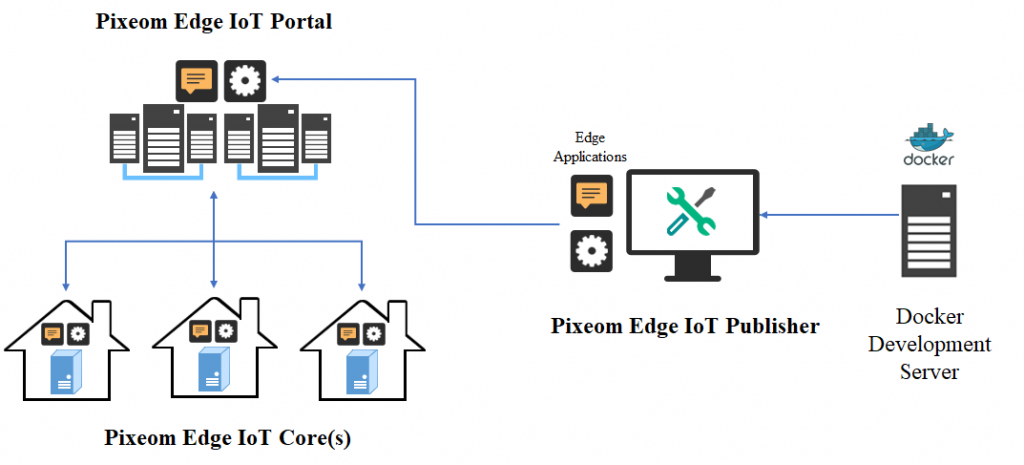 The MACCHIATObin community board is using Marvell’s ARMADA 8040 processor and has a 64-bit ARMv8 quad-core processor core (running at up to 2.0GHZ), and supports up to 16GB of DDR4 memory and a wide array of different I/Os. Through use of Linux® on the Marvell MACCHIATObin board, the multifaceted Pixeom Edge IoT platform can facilitate implementation of edge computing servers (or cloudlets) at the periphery of the cloud network. Marvell will be able to show the power of this popular hardware platform to run advanced machine learning, data processing, and IoT functions as part of Pixeom’s demo. The role-based access features of the Pixeom Edge IoT platform also mean that developers situated in different locations can collaborate with one another in order to create compelling edge computing implementations. Pixeom supplies all the edge computing support needed to allow Marvell embedded processors users to establish their own edge-based applications, thus offloading operations from the center of the network.
The MACCHIATObin community board is using Marvell’s ARMADA 8040 processor and has a 64-bit ARMv8 quad-core processor core (running at up to 2.0GHZ), and supports up to 16GB of DDR4 memory and a wide array of different I/Os. Through use of Linux® on the Marvell MACCHIATObin board, the multifaceted Pixeom Edge IoT platform can facilitate implementation of edge computing servers (or cloudlets) at the periphery of the cloud network. Marvell will be able to show the power of this popular hardware platform to run advanced machine learning, data processing, and IoT functions as part of Pixeom’s demo. The role-based access features of the Pixeom Edge IoT platform also mean that developers situated in different locations can collaborate with one another in order to create compelling edge computing implementations. Pixeom supplies all the edge computing support needed to allow Marvell embedded processors users to establish their own edge-based applications, thus offloading operations from the center of the network. 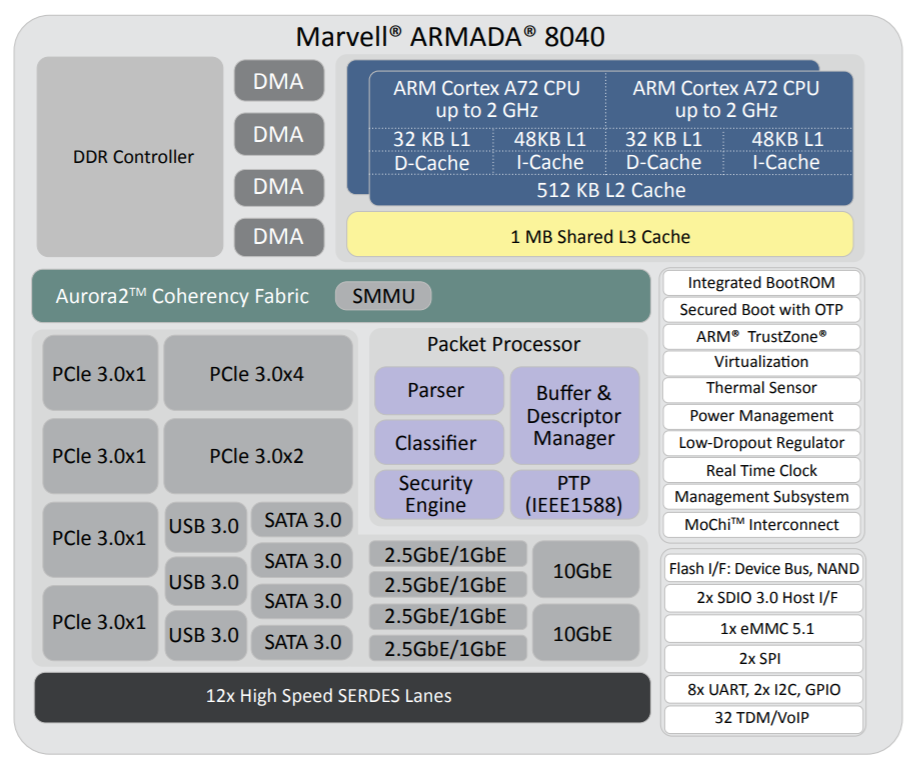 Marvell will also be demonstrating the compatibility of its technology with the Google Cloud platform, which enables the management and analysis of deployed edge computing resources at scale. Here, once again the MACCHIATObin board provides the hardware foundation needed by engineers, supplying them with all the processing, memory and connectivity required.
Marvell will also be demonstrating the compatibility of its technology with the Google Cloud platform, which enables the management and analysis of deployed edge computing resources at scale. Here, once again the MACCHIATObin board provides the hardware foundation needed by engineers, supplying them with all the processing, memory and connectivity required. Those visiting Marvell’s suite at CES (Venetian, Level 3 - Murano 3304, 9th-12th January 2018, Las Vegas) will be able to see a series of different demonstrations of the MACCHIATObin community board running cloud workloads at the network edge. Make sure you come by!
-
2018年1月9日
Processing the World’s Data
マーベル、PR チーム
The data requirements of modern society are escalating at a relentless pace with new paradigms changing the way data is processed. The rapidly rising volume of data that is now being uploaded and downloaded from the cloud (such as HD video or equally data-intensive immersive gaming content) is putting incredible strain onto existing network infrastructure - testing both the bandwidth and data density speeds that are supported.
The onset of augmented reality (AR) and virtual reality (VR) will require access to considerable processing power, but at the same time mandate extremely low latency levels, to prevent lag effects. The widespread roll-out of IoT infrastructure, connected cars, robotics and industrial automation systems, to name a few, will also have uncompromising processing and latency demands that are simply not in line with current network architectures.
Transporting data from the network edge back to centralized servers (and vice versa) takes time, and hence adds an unacceptable level of latency to certain applications. All this will mean that fundamental changes need to be made. Rather than having all the processing resources located at the center of the network, a more distributed model is going to be needed in the future. Though the role of centralized servers will unquestionably still be important, this will be complemented by remote servers that are located at the edge of the network - thus making them closer to the users themselves, and thereby mitigating latency issues which is critical for time-sensitive data.
The figures on this speak for themselves. It is estimated that by 2020, approximately 45% of fog computing-generated data will be stored, processed, analyzed and subsequently acted upon either close to or at the edge of the network. Running in tandem with this, data centers will look to start utilizing in-storage processing. Here, in order to alleviate CPU congestion levels and mitigate network latency, data processing resources are going to start being placed closer to the storage drive. This, as a result, will dispense with the need to continuously transfer large quantities of data to and from storage reserves so that it can be processed, with processing tasks instead taking place inside the storage controller.
The transition from traditional data centers to edge-based computing, along with the onset of in-storage processing, will call for a new breed of processor devices. In addition to delivering the operational performance that high throughput, low latency applications will require, these devices will also need to meet the power, cost and space constraints that are going to characterize edge deployment.
Through the highly advanced portfolio of ARMADA® Arm-based multi-core embedded processors, Marvell has been able to supply the industry with processing solutions that can help engineers in facing the challenges that have just been outlined. These ICs combine high levels of integration, elevated performance and low power operation. Using ARMADA as a basis, the company has worked with technology partners to co-develop the MACCHIATObin™ and ESPRESSObin® community boards. The Marvell community boards, which each use 64-bit ARMADA processors, bring together a high-performance single-board computing platform and open source software for developers and designers working with a host of networking, storage and connectivity applications. They give users both the raw processing capabilities and the extensive array of connectivity options needed to develop proprietary edge computing applications from the ground up.
Incorporating a total of 6 MACCHIATObin boards plus a Marvell high density Prestera DX 14 port, 10 Gigabit Ethernet switch IC, the NFV PicoPod from PicoCluster is another prime example of ARMADA technology in action. This ultra-compact unit provides engineers with a highly cost effective and energy efficient platform upon which they can implement their own virtualized network applications. Fully compliant with the OPNFV Pharos specification, it opens up the benefits of NFV technology to a much broader cross section of potential customers, allowing everyone from the engineering teams in large enterprises all the way down to engineers who are working solo to rapidly develop, verify and deploy virtual network functions (VNFs) - effectively providing them with their own ‘datacenter on desktop’.
The combination of Marvell IoT enterprise edge gateway technology with the Google Cloud IoT Core platform is another way via which greater intelligence is being placed at the network periphery. The upshot of this will be that the estimated tens of billions of connected IoT nodes that will be installed over the course of the coming years can be managed in the most operationally efficient manner, offloading much of the workload from the core network’s processing capabilities and only utilizing them when it is completely necessary.
 Check out www.marvell.com to learn more about how Marvell is processing the world’s data.
Check out www.marvell.com to learn more about how Marvell is processing the world’s data. -
2017 年 11 月 28 日
仮想を超えて: 現在の仮想ネットワークに物理ポートを追加できる、Marvell ESPRESSObin プラットフォームに基づいた革新的な新製品
マーベル、シニア・ソフトウェア・プロダクト・ライン・マネージャー、マエン・スレイマン著
A number of emerging companies that serve the networking and data storage sectors are increasingly using Marvell’s popular community board – the Marvell ESPRESSObin® platform – in their product offerings. ZeroTier Edge is the latest appliance to be added to what is an ever growing list of such product offerings.
With this new product, Irvine-based start-up ZeroTier is looking to make the wide area network (WAN) much more local. According to ZeroTier, by using ZeroTier Edge, it is possible to create secure and robust LANs that can connect with a broad array of different devices across multiple locations. This means that a greater scope of equipment will now be able to gain access to virtual network infrastructure as it continues to be rolled out, without the associated software element needing to be installed.
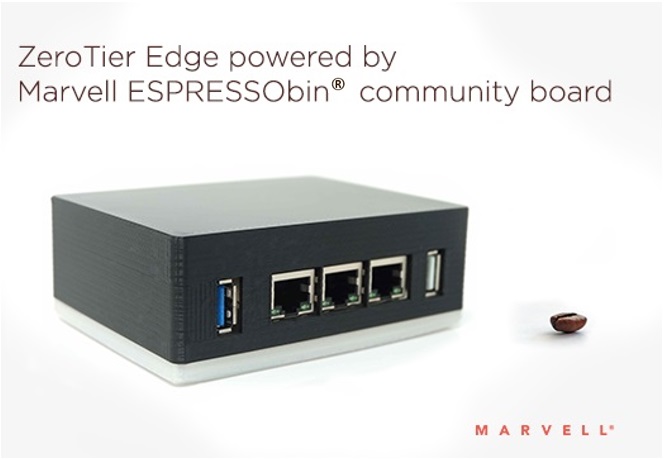 This feature overcomes current obstacles that are holding back more widespread use of such connectivity. For example, in relation to some legacy equipment (office peripherals, building automation systems, surveillance cameras, industrial control mechanisms, etc.), installing this software simply isn’t an option, or in other cases (like where a large number of computers are involved), it is just impractical. Furthermore, using ZeroTier Edge mitigates the serious security issues that installing software onto a multitude of connected devices could potentially raise.
This feature overcomes current obstacles that are holding back more widespread use of such connectivity. For example, in relation to some legacy equipment (office peripherals, building automation systems, surveillance cameras, industrial control mechanisms, etc.), installing this software simply isn’t an option, or in other cases (like where a large number of computers are involved), it is just impractical. Furthermore, using ZeroTier Edge mitigates the serious security issues that installing software onto a multitude of connected devices could potentially raise. Relying on Marvell’s ARMADA® system-on-chip (SoC) technology and open source software, the ZeroTier Edge is a compact and highly versatile unit that can be located on a desktop and addresses a plethora of software-defined networking applications. This unit delivers enterprise-grade VPN, SD-WAN and network virtualization functionality.
ZeroTier Edge basically acts as a pre-configured layer 2 bridge that provides the physical ports (both wired and wireless) needed to enable hardware (like the examples set forth above) to connect with virtualized networks. Its ease of use means that this unit can even be installed by non-IT staff. As a result, ZeroTier is able to offer enterprise customers a unique plug-and-play solution such that they can get the full benefit of software-defined networking without needing to implement the complex and costly bridging arrangements that would otherwise be required.
Each ZeroTier Edge unit incorporates a Marvell ESPRESSObin single board computing platform that has been purpose built for supporting open source development activity of this kind within the networking space. The board features a high performance ARMADA 3700 dual core 64-bit ARM®-based processor that is capable of running at speeds of 1.2GHz. This IC allows the ZeroTier Edge to deal with up to 1Gbps of incoming/outgoing encrypted data traffic.
Through the Marvell ESPRESSObin board, ZeroTier Edge can also take advantage of extensive I/O capabilities, with 3x Gigabit Ethernet ports, a USB 3.0 SuperSpeed interface, plus dual band 802.11ac Wi-Fi®, SATA (for connection to network data storage resources) and mini PCIe. 1GByte of on-board DRAM memory and 4GBytes of flash memory are supported, too, with provision for attaching additional memory capacity using the SD card slot. There are also ample GPIO pins available.
Thanks to the Marvell ESPRESSObin board’s ability to provide strong operational performance at an attractive price point, implementing ZeroTier Edge into customers’ networks doesn’t require a heavy investment. The product is currently going through the crowdfunding process and has already gained over 90% of its target figure. The initial units are expected to start shipping in early 2018.
For more information on ZeroTier Edge and the opportunity to support the project, visit: https://www.indiegogo.com/projects/zerotier-edge-open-source-enterprise-vpn-sd-wan#/
-
October 26, 2017
Sentinel と Sartura と協力し、マーベルが強力なセキュリティソフトウェアと実装のサポートを OpenWrt サミットで披露
マーベル、シニア・ソフトウェア・プロダクト・ライン・マネージャー、マエン・スレイマン著
Thanks to its collaboration with leading players in the OpenWrt and security space, Marvell will be able to show those attending the OpenWrt Summit (Prague, Czech Republic, 26-27th October) new beneficial developments with regard to its Marvell ARMADA® multi-core processors. In collaboration with contributors Sartura and Sentinel, these developments will be demonstrated on Marvell’s portfolio of networking community boards that support the 64-bit Arm® based Marvell ARMADA processor devices, by running the increasingly popular and highly versatile OpenWrt operating system, plus the latest advances in security software. We expect these new offerings will assist engineers in mitigating the major challenges they face when constructing next-generation customer-premises equipment (CPE) and uCPE platforms.
On display at the event at both the Sentinel and Sartura booths will be examples of the Marvell MACCHIATObin™ board (with a quad-core ARMADA 8040 that can deliver up to 2GHz operation) and the Marvell ESPRESSObin™ board (with a dual-core ARMADA 3700 lower power processor running at 1.2GHz).
The boards located at the Sartura booth will demonstrate the open source OpenWrt offering of the Marvell MACCHIATObin/ESPRESSObin platforms and will show how engineers can benefit from this company’s OpenWrt integration capabilities. The capabilities have proven invaluable in helping engineers expedite their development projects more quickly and allow the full realization of initial goals set for such projects. The Sartura team can take engineers’ original CPE designs incorporating ARMADA and provide production level software needed for inclusion in end products.
Marvell will also have MACCHIATObin/ESPRESSObin boards demonstrated at the Sentinel booth. These will feature highly optimized security software. Using this security software, companies looking to employ ARMADA based hardware in their designs will be able to ensure that they have ample protection against the threat posed by malware and harmful files - like WannaCry and Nyetya ransomware, as well as Petya malware, etc. This protection relies upon Sentinel’s File Validation Service (FVS), which inspects all HTTP, POP and IMAP files as they pass through the device toward the client. Any files deemed to be malicious are then blocked. This security technology is very well suited to CPE networking infrastructure and edge computing, as well as IoT deployments. Sentinel’s FVS technology can also be implemented on vCPE/uCPE as a security virtual network function (VNF), in addition to native implementation over physical CPEs - providing similar protection levels due to its extremely lightweight architecture and very low latency. FVS is responsible for identifying download requests and subsequently analyzing the data being downloaded. This software package can run on all Linux-based embedded operating systems for CPE and NFV devices which meet minimum hardware requirements and offer the necessary features.
Through collaborations such as those described above, Marvell is building an extensive ecosystem around its ARMADA products. As a result, Marvell will be able to support future development of secure, high performance CPE and uCPE/vCPE systems that exhibit much greater differentiation.
-
October 11, 2017
ESPRESSObin および MACCHIATObin コミュニティ・プラットフォームで Google Cloud IoT Core パブリックベータ版をサポートすることで、IoT の知能によって企業の強みをさらに強化
By Aviad Enav Zagha, Sr. Director Embedded Processors Product Line Manager, Networking Group, Marvell
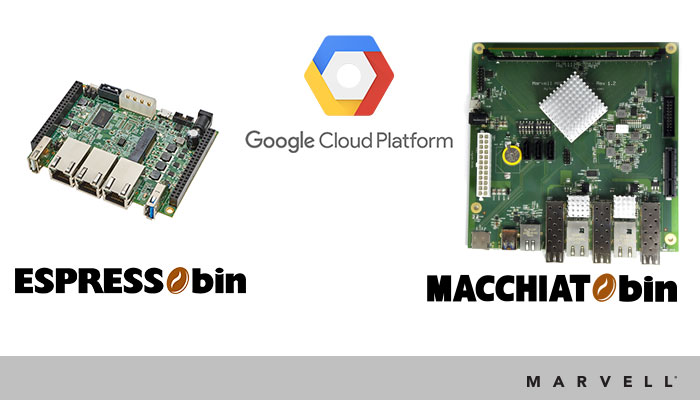 Though the projections made by market analysts still differ to a considerable degree, there is little doubt about the huge future potential that implementation of Internet of Things (IoT) technology has within an enterprise context. It is destined to lead to billions of connected devices being in operation, all sending captured data back to the cloud, from which analysis can be undertaken or actions initiated. This will make existing business/industrial/metrology processes more streamlined and allow a variety of new services to be delivered.
Though the projections made by market analysts still differ to a considerable degree, there is little doubt about the huge future potential that implementation of Internet of Things (IoT) technology has within an enterprise context. It is destined to lead to billions of connected devices being in operation, all sending captured data back to the cloud, from which analysis can be undertaken or actions initiated. This will make existing business/industrial/metrology processes more streamlined and allow a variety of new services to be delivered. With large numbers of IoT devices to deal with in any given enterprise network, the challenges of efficiently and economically managing them all without any latency issues, and ensuring that elevated levels of security are upheld, are going to prove daunting. In order to put the least possible strain on cloud-based resources, we believe the best approach is to divest some intelligence outside the core and place it at the enterprise edge, rather than following a purely centralized model. This arrangement places computing functionality much nearer to where the data is being acquired and makes a response to it considerably easier. IoT devices will then have a local edge hub that can reduce the overhead of real-time communication over the network. Rather than relying on cloud servers far away from the connected devices to take care of the ‘heavy lifting’, these activities can be done closer to home. Deterministic operation is maintained due to lower latency, bandwidth is conserved (thus saving money), and the likelihood of data corruption or security breaches is dramatically reduced.
Sensors and data collectors in the enterprise, industrial and smart city segments are expected to generate more than 1GB per day of information, some needing a response within a matter of seconds. Therefore, in order for the network to accommodate the large amount of data, computing functionalities will migrate from the cloud to the network edge, forming a new market of edge computing.
In order to accelerate the widespread propagation of IoT technology within the enterprise environment, Marvell now supports the multifaceted Google Cloud IoT Core platform. Cloud IoT Core is a fully managed service mechanism through which the management and secure connection of devices can be accomplished on the large scales that will be characteristic of most IoT deployments.
Through its IoT enterprise edge gateway technology, Marvell is able to provide the necessary networking and compute capabilities required (as well as the prospect of localized storage) to act as mediator between the connected devices within the network and the related cloud functions. By providing the control element needed, as well as collecting real-time data from IoT devices, the IoT enterprise gateway technology serves as a key consolidation point for interfacing with the cloud and also has the ability to temporarily control managed devices if an event occurs that makes cloud services unavailable. In addition, the IoT enterprise gateway can perform the role of a proxy manager for lightweight, rudimentary IoT devices that (in order to keep power consumption and unit cost down) may not possess any intelligence. Through the introduction of advanced ARM®-based community platforms, Marvell is able to facilitate enterprise implementations using Cloud IoT Core. The recently announced Marvell MACCHIATObin™ and Marvell ESPRESSObin™ community boards support open source applications, local storage and networking facilities. At the heart of each of these boards is Marvell’s high performance ARMADA® system-on-chip (SoC) that supports Google Cloud IoT Core Public Beta.
Via Cloud IoT Core, along with other related Google Cloud services (including Pub/Sub, Dataflow, Bigtable, BigQuery, Data Studio), enterprises can benefit from an all-encompassing IoT solution that addresses the collection, processing, evaluation and visualization of real-time data in a highly efficient manner. Cloud IoT Core features certificate-based authentication and transport layer security (TLS), plus an array of sophisticated analytical functions.
Over time, the enterprise edge is going to become more intelligent. Consequently, mediation between IoT devices and the cloud will be needed, as will cost-effective processing and management. With the combination of Marvell’s proprietary IoT gateway technology and Google Cloud IoT Core, it is now possible to migrate a portion of network intelligence to the enterprise edge, leading to various major operational advantages.
Please visit MACCHIATObin Wiki and ESPRESSObin Wiki for instructions on how to connect to Google’s Cloud IoT Core Public Beta platform.
-
June 17, 2017
画期的な新しいオープンソースNASソリューションに不可欠なマーベル・テクノロジー
マーベル、シニア・ソフトウェア・プロダクト・ライン・マネージャー、マエン・スレイマン著
The quantity of data storage that each individual now expects to be able to have access to has ramped up dramatically over the course of the last few years. This has been predominantly fueled by society’s ravenous hunger for various forms of multimedia entertainment and more immersive gaming, plus our growing obsession with taking photos or videos of all manner of things that we experience during an average day.
The emergence of the ‘connected home’ phenomenon, along with greater use of wearable technology and the enhanced functionality being incorporated into each new generation of smartphone handset have all contributed to our increasingly data oriented lives. As a result each of us is generating, downloading and transferring larger amounts of data-heavy content than would have been even conceivable a relatively short while in the past. For example, market research firm InfoTrends has estimated that consumers worldwide will be responsible for taking over 1.2 trillion new photos during 2017 (that is more than double the figure from 5 years ago). Furthermore, there are certainly no indications that the dynamics that are driving this will weaken and everything will start to slow down. On the contrary, it is likely that the pace will only continue to accelerate.
If individuals are to keep on amassing personal data at current rates, then it is clear that they will need access to a new form of flexible storage solution that is up to the job. In a report compiled by industry analysts at Technavio, the global consumer network attached storage (NAS) market
is predicted to grow accordingly - witnessing an impressive 11% compound annual growth between now and the end of this decade.Though, it must be acknowledged, that we are shifting an increasing proportion of our overall data storage needs to the cloud, the synching of large media files for use in the home environments can often prove to be impractical, because of latency issues arising. Also there are serious security issues associated with relying on cloud-based storage when it comes to keeping certain personal data and these need to be given due consideration.
Start-up company Kobol has recently initiated a crowdfunding campaign to garner financial backing for its Helios4 offering. The first of its kind - this is an open source, open hardware NAS solution that will allow the storing and sharing of music, photos and movies through connection to the user’s home network. It presents consumers with a secure, flexible and rapidly accessible data storage reserve with a capacity of up to 40 TeraBytes (which equates to around 700,000 hours of music, 20,000 hours of movies or 12 million photos).
Helios4 has small dimensions. Built-in RAID redundancy is included in order for ongoing reliability to be assured. This means that even if one of the 4 hard drives (each delivering 10 TeraBytes) were to crash, the user’s content would remain safely stored, as the data is mirrored onto another of its drives. The result is a compact, cost effective and energy saving storage solution, which acts like a ‘personal cloud’.
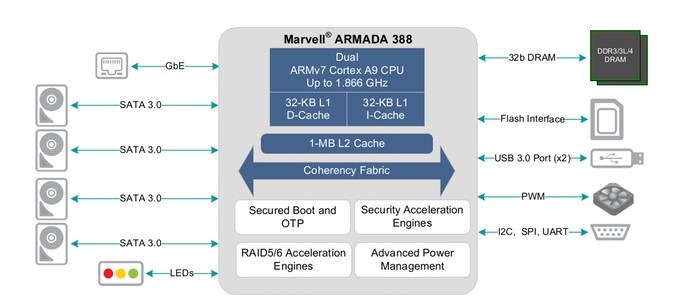 図 1:Schematic showing the interface structure of Helios4 powered by ARMADA 388 SoC
図 1:Schematic showing the interface structure of Helios4 powered by ARMADA 388 SoC 図 2:The component parts that make up the Helios4 kit
Inspired by the open hardware, collaborative philosophy, Helios4 can be supplied as a simple to assemble kit that engineers can then assemble themselves. Otherwise, for those with less engineering experience it comes as a straightforward to use out-of-the-box solution. It offers a high degree of flexibility and a broad array of different connectivity options.
At the heart of the Helios4’s design is a sophisticated ARMADA 388 32-bit ARM-based system-on-chip (SoC) from Marvell, which combines high performance benchmarks with power frugal operation. Based on 28nm node, low power semiconductor technology, its dual-core ARM Cortex-A9 processing resource is capable of running at speeds of up to 1.8 GHz. USB 3.0 SuperSpeed and SATA 3.0 ports are included so that elevated connectivity levels can be supported. Cryptographic mechanisms are also integrated to maintain superior system security.
By clicking on the following link you can learn more about the Helios4 Kickstarter campaign. For those interested in getting involved, the deadline to make a contribution is 19th June.
-
June 07, 2017
コミュニティ・プラットフォームにより、データセンター、ネットワークおよびストレージのエコシステムに ARM 64 ビットを簡単に導入可能に
マーベル、シニア・ソフトウェア・プロダクト・ライン・マネージャー、マエン・スレイマン著
Marvell MACCHIATObin community board is first-of-its-kind, high-end ARM 64-bit networking and storage community board
The increasing availability of high-speed internet services is connecting people in novel and often surprising ways, and creating a raft of applications for data centers. Cloud computing, Big Data and the Internet of Things (IoT) are all starting to play a major role within the industry.
These opportunities call for innovative solutions to handle the challenges they present, many of which have not been encountered before in IT. The industry is answering that call through technologies and concepts such as software defined networking (SDN), network function virtualization (NFV) and distributed storage. Making the most of these technologies and unleashing the potential of the new applications requires a collaborative approach. The distributed nature and complexity of the solutions calls for input from many different market participants.
A key way to foster such collaboration is through open-source ecosystems. The rise of Linux has demonstrated the effectiveness of such ecosystems and has helped steer the industry towards adopting open-source solutions. (Examples: AT&T Runs Open Source White Box Switch in its Live Network, SnapRoute and Dell EMC to Help Advance Linux Foundation's OpenSwitch Project, Nokia launches AirFrame Data Center for the Open Platform NFV community)
Communities have come together through Linux to provide additional value for the ecosystem. One example is the Linux Foundation Organization which currently sponsors more than 50 open source projects. Its activities cover various parts of the industry from IoT ( IoTivity , EdgeX Foundry ) to full NFV solutions, such as the Open Platform for NFV (OPNFV). This is something that would have been hard to conceive even a couple of years ago without the wide market acceptance of open-source communities and solutions.
Although there are numerous important open-source software projects for data-center applications, the hardware on which to run them and evaluate solutions has been in short supply. There are many ARM® development boards that have been developed and manufactured, but they primarily focus on simple applications.
All these open source software ecosystems require a development platform that can provide a high-performance central processing unit (CPU), high-speed network connectivity and large memory support. But they also need to be accessible and affordable to ARM developers. Marvell MACCHIATObin® is the first ARM 64-bit community platform for open-source software communities that provides solutions for, among others, SDN, NFV and Distributed Storage.
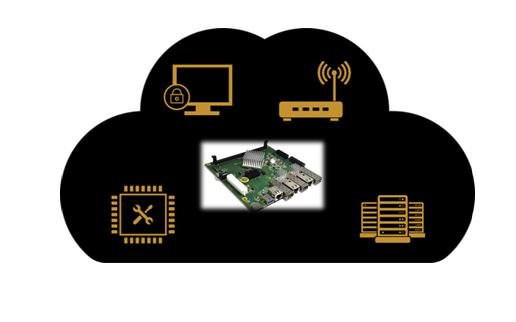 A high-performance ARM 64-bit community platform
A high-performance ARM 64-bit community platform The Marvell MACCHIATObin community board is a mini-ITX form-factor ARM 64-bit network and storage oriented community platform. It is based on the Marvell hyperscale SBSA-compliant ARMADA® 8040 system on chip (SoC) that features four high-performance Cortex®-A72 ARM 64-bit CPUs. ARM Cortex-A72 CPU is the latest and most powerful ARM 64-bit CPU available and supports virtualization, an increasingly important aspect for data center applications.
Together with the quad-core platform, the ARMADA 8040 SoC provides two 10G Ethernet interfaces, three SATA 3.0 interfaces and support for up to 16GB of DDR4 memory to handle highly complex applications. This power does not come at the cost of affordability: the Marvell MACCHIATObin community board is priced at $349. As a result, the Marvell MACCHIATObin community board is the first affordable high-performance ARM 64-bit networking and storage community platform of its kind.
SolidRun (https://www.solid-run.com/) started shipping the Marvell MACCHIATObin community board in March 2017, providing an early access of the hardware to open-source communities.
The Marvell MACCHIATObin community board is easy to deploy. It uses the compact mini-ITX form factor, enabling developers to purchase one of the many cases based on the popular standard mini-ITX case to meet their requirements. The ARMADA 8040 SoC itself is SBSA-compliant (http://infocenter.arm.com/help/topic/com.arm.doc.den0029/) to offer unified extensible firmware interface (UEFI) support.
The ARMADA 8040 SoC includes an advanced network packet processor that supports features such as parsing, classification, QoS mapping, shaping and metering. In addition, the SoC provides two security engines that can perform full IPSEC, DTL and other protocol-offload functions at 10G rates. To handle high-performance RAID 5/6 support, the ARMADA 8040 SoC employs high-speed DMA and XOR engines.
For hardware expansion, the Marvell MACCHIATObin community board provides one PCIex4 3.0 slot and a USB3.0 host connector. For non-volatile storage, options include a built-in eMMC device and a micro-SD card connector. Mass storage is available through three SATA 3.0 connectors. For debug, developers can access the board’s processors through a choice of a virtual UART running over the microUSB connector, 20-pin connector for JTAG access or two UART headers. The Marvell MACCHIATObin community board technical specifications can be found here: MACCHIATObin Specification.
Open source software enables advanced applications
The Marvell MACCHIATObin community board comes with rich open source software that includes ARM Trusted Firmware (ATF), U-Boot, UEFI, Linux Kernel, Yocto, OpenWrt, OpenDataPlane (ODP) , Data Plane Development Kit (DPDK), netmap and others; many of the Marvell MACCHIATObin open source software core components are available at: https://github.com/orgs/MarvellEmbeddedProcessors/.
To provide the Marvell MACCHIATObin community board with ready-made support for the open-source platforms used at the edge and data centers for SDN, NFV and similar applications, standard operating systems like Suse Linux Enterprise, CentOS, Ubuntu and others should boot and run seamlessly on the Marvell MACCHIATObin community board.
As the ARMADA 8040 SoC is SBSA compliant and supports UEFI with ACPI, along with Marvell’s upstreaming of Linux kernel support, standard operating systems can be enabled on the Marvell MACCHIATObin community board without the need of special porting.
On top of this core software, a wide variety of ecosystem applications needed for the data center and edge applications can be assembled.
For example, using the ARMADA 8040 SoC high-speed networking and security engine will enable the kernel netdev community to develop and maintain features such as XDP or other kernel network features on ARM 64-bit platforms. The ARMADA 8040 SoC security engine will enable many other Linux kernel open-source communities to implement new offloads.
Thanks to the virtualization support available on the ARM Cortex A72 processors, virtualization technology projects such as KVM and XEN can be enabled on the platform; container technologies like LXC and Docker can also be enabled to maximize data center flexibility and enable a virtual CPE ecosystem where the Marvell MACCHIATObin community board can be used to develop edge applications on a 64-bit ARM platform.
In addition to the mainline Linux kernel, Marvell is upstreaming U-Boot and UEFI, and is set to upstream and open the Marvell MACCHIATObin ODP and DPDK support. This makes the Marvell MACCHIATObin board an ideal community platform for both communities, and will open the door to related communities who have based their ecosystems on ODP or DPDK. These may be user-space network-stack communities such as OpenFastPath and FD.io or virtual switching technologies that can make use of both the ARMADA 8040 SoC virtualization support and networking capabilities such as Open vSwitch (OVS) or Vector Packet Processing (VPP). Similar to ODP and DPDK, Marvell MACCHIATObin netmap support can enable VALE virtual switching technology or security ecosystem such as pfsense.
Thanks to its hardware features and upstreamed software support, the Marvell MACCHIATObin community board is not limited to data center SDN and NFV applications. It is highly suited as a development platform for network and security products and applications such as network routers, security appliances, IoT gateways, industrial computing, home customer-provided equipment (CPE) platforms and wireless backhaul controllers; a new level of scalable and modular solutions can be further achieved when combining the Marvell MACCHIATObin community board with Marvell switches and PHY products.
Summary
The Marvell MACCHIATObin is the first of its kind: a high-performance, cost-effective networking community platform. The board supports a rich software ecosystem and has made available high-performance, high-speed networking ARM 64-bit community platforms at a price that is affordable for the majority of ARM developers, software vendors and other interested companies. It makes ARM 64-bit far more accessible than ever before for developers of solutions for use in data centers, networking and storage.
-
2017年5月23日
Marvell MACCHIATObin コミュニティ・ボードの発送開始
マーベル、シニア・ソフトウェア・プロダクト・ライン・マネージャー、マエン・スレイマン著
First-of-its-kind community platform makes ARM-64bit accessible for data center, networking and storage solutions developers
As network infrastructure continues to transition to Software-Defined Networking (SDN) and Network Functions Virtualization (NFV), the industry is in great need of cost-optimized hardware platforms coupled with robust software support for the development of a variety of networking, security and storage solutions. The answer is finally here!
Now, with the shipping of the Marvell MACCHIATObin™ community board, developers and companies have access to a high-performance, affordable ARM®-based platform with the required technologies such as an ARMv8 64bit CPU, virtualization, high-speed networking and security accelerators, and the added benefit of open source software. SolidRun started shipping the Marvell MACCHIATObin community board in March 2017, providing an early access of the hardware to open-source communities.
Click image to enlarge
The Marvell MACCHIATObin community board is a mini-ITX form-factor ARMv8 64bit network- and storage-oriented community platform. It is based on the Marvell® hyperscale SBSA-compliant ARMADA® 8040 system on chip (SoC) (http://www.marvell.com/embedded-processors/armada-80xx/) that features quad-core high-performance Cortex®-A72 ARM 64bit CPUs
Together with the quad-core Cortex-A72 ARM64bit CPUs, the Marvell MACCHIATObin community board provides two 10G Ethernet interfaces, three SATA 3.0 interfaces and support for up to 16GB of DDR4 memory to handle higher performance data center applications. This power does not come at the cost of affordability: the Marvell MACCHIATObin community board is priced at $349. As a result, it is the first affordable high-performance ARM 64bit networking and storage community platform of its kind.
The Marvell MACCHIATObin community board is easy to deploy. It uses the compact mini-ITX form factor enabling developers and companies to purchase one of the many cases based on the popular standard mini-ITX case to meet their requirements. The ARMADA 8040 SoC itself is SBSA- compliant to offer unified extensible firmware interface (UEFI) support. You can find the full specification at: http://wiki.macchiatobin.net/tiki-index.php?page=About+MACCHIATObin.
To provide the Marvell MACCHIATObin community board with ready-made support for the open-source platforms used in SDN, NFV and similar applications, Marvell is upstreaming MACCHIATObin software support to the Linux kernel, U-Boot and UEFI, and is set to upstream and open the Marvell MACCHIATObin community board for ODP and DPDK support.
In addition to upstreaming the MACCHIATObin software support, Marvell added MACCHIATObin support to the ARMADA 8040 SDK and plans to make the ARMADA 8040 SDK publicly available. Many of the ARMADA 8040 SDK components are available at: https://github.com/orgs/MarvellEmbeddedProcessors/.
For more information about the many innovative features of the Marvell MACCHIATObin community board, please visit: http://wiki.macchiatobin.net. To place an order for the Marvell MACCHIATObin community board, please go to: http://macchiatobin.net/.
最新の記事
- HashiCorp and Marvell: Teaming Up for Multi-Cloud Security Management
- Cryptomathic and Marvell: Enhancing Crypto Agility for the Cloud
- The Big, Hidden Problem with Encryption and How to Solve It
- Self-Destructing Encryption Keys and Static and Dynamic Entropy in One Chip
- Dual Use IP: Shortening Government Development Cycles from Two Years to Six Months



